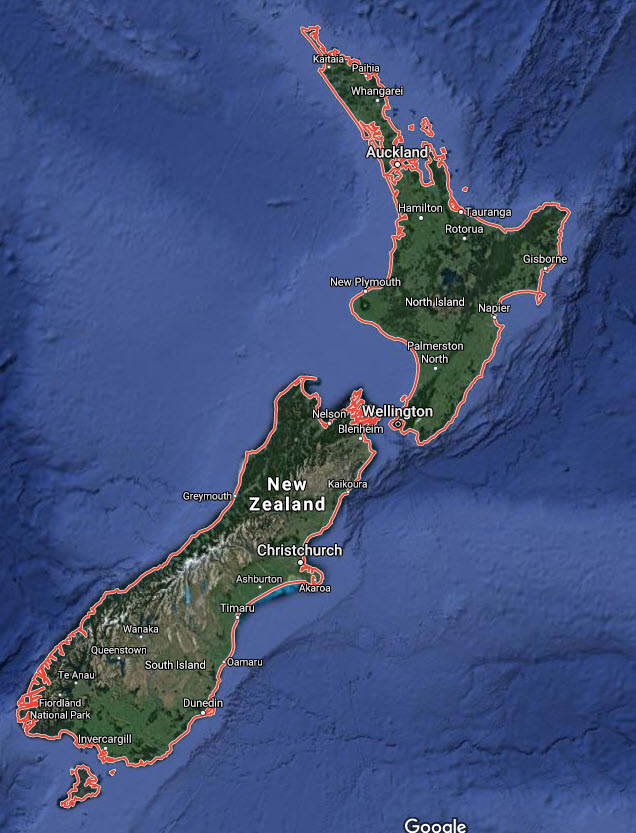The previous New Zealand posts covered where we went and what we did — a uniformly good trip throughout.
Most of the logistic and mechanical elements of traveling in New Zealand were also positive.
As mentioned previously, phone and data service was seamless for us — no new SIMs, data plans, or phones needed. However, if your phone won’t work natively in NZ, there are plenty of places at the airports and in the larger cities where you can get what you need to use the local airwaves.
Many places offer also free wi-fi.
Money was mostly easy: There were very few places that didn’t accept credit or debit cards, so the need for actual hard cash money was minimal. We’d exchanged 200US$ for NZ$ carrying-around cash when we arrived, and ended up selling about 90% of it back when we left, two weeks later. We just didn’t need much actual hard cash.
BTW, New Zealand uses plastic bills with translucent windows.
Electricity was also easy to manage. NZ residential service is at 230/240 volts, and all our plug-in gear was 115-220/230-240v compatible, so we didn’t need a voltage adaptor. However, NZ (including its airplanes and ferries) uses sockets and plugs with two slanted connectors, so we did need to bring simple, passive plug-adaptors that cost a couple bucks each (Amazon, etc.).

I also brought a light-duty, multi-socket extension cord from home. I’d use an adaptor to plug the extension cord into a single NZ socket, and then plug my US-type rechargeable gear (phones, external battery packs, etc.) into the extension cord’s multiple sockets, no other adaptors needed.
Travel time: Outside of the cities and larger towns, there’s no such thing as a straight line in New Zealand. Roads are narrow and meandering, with frequent one-lane bridges. That’s part of the charm, and the slower pace, of the NZ countryside, but it will take you longer to get from place to place than the raw distance might suggest.
And don’t underestimate the distances: From the northern tip of the North Island to the southern tip of the South, NZ is about 1000mi/1600km, or roughly the same distance as from Vancouver to Los Angeles, or Boston to Jacksonville, or London to Naples.
That was the biggest mistake I made: In the early planning, I figured “a week for each island,” plus travel days, making an 18 day trip. By the time I realized we could have used a few more days — some just for rest (being constantly on the go was exhilarating at first, exhausting towards the end), and some for additional travel and exploration — our plans weren’t flexible enough to alter. I should have planned for at least three full weeks, and probably four.
The YHA accomodations were a revelation; none was bad, several were really excellent, and all were far less expensive than conventional hotels. We always had a private room, and usually had a private bathroom. The shared-bath places were clean and large enough to prevent traffic jams; and the kitchen facilities were uniformly good. I’d wrongly assumed that “youth” hostels were more or less exclusively for young folks, but I clearly was wrong: all are welcome. I’ll definitely check out YHA and similar hostel options for future trips.
- Hostelling International: https://www.hihostels.com/
- Hostelling International USA: https://www.hiusa.org/about-us/hiusa-news/what-is-a-youth-hostel
- Some booking agencies (eg Booking.com) also list hostels among their offerings, but you might have to search to find the listings.
I may add additional items here as they occur to me; and if this travelog has raised any questions, send ’em to me, and I’ll do my best to answer.
But in all — and as you’ve seen in these posts — it was a really good and worthwhile trip. Thanks for reading along!
Permalink: https://langa.com/?p=4630
![[seperator]](https://i0.wp.com/langa.com/wp-content/uploads/2019/02/SEPERATOR-short-grey.png?resize=104%2C6)
COMMENT / QUESTION on THIS ITEM? See the Comment box at bottom of this page!
NEW QUESTION? Ask here!
(Want free notification of new content? Click here!)



Great post 😁
No matter how much time you plan for, it’s never enough in my experience. For example, I lived in Rome for 3 months a long time ago, and took morning and afternoon tours every weekend for a month just to know what I wanted to explore again on my own. Usually adding more time than you think is necessary for a trip is a minor expense compared to the total trip cost.